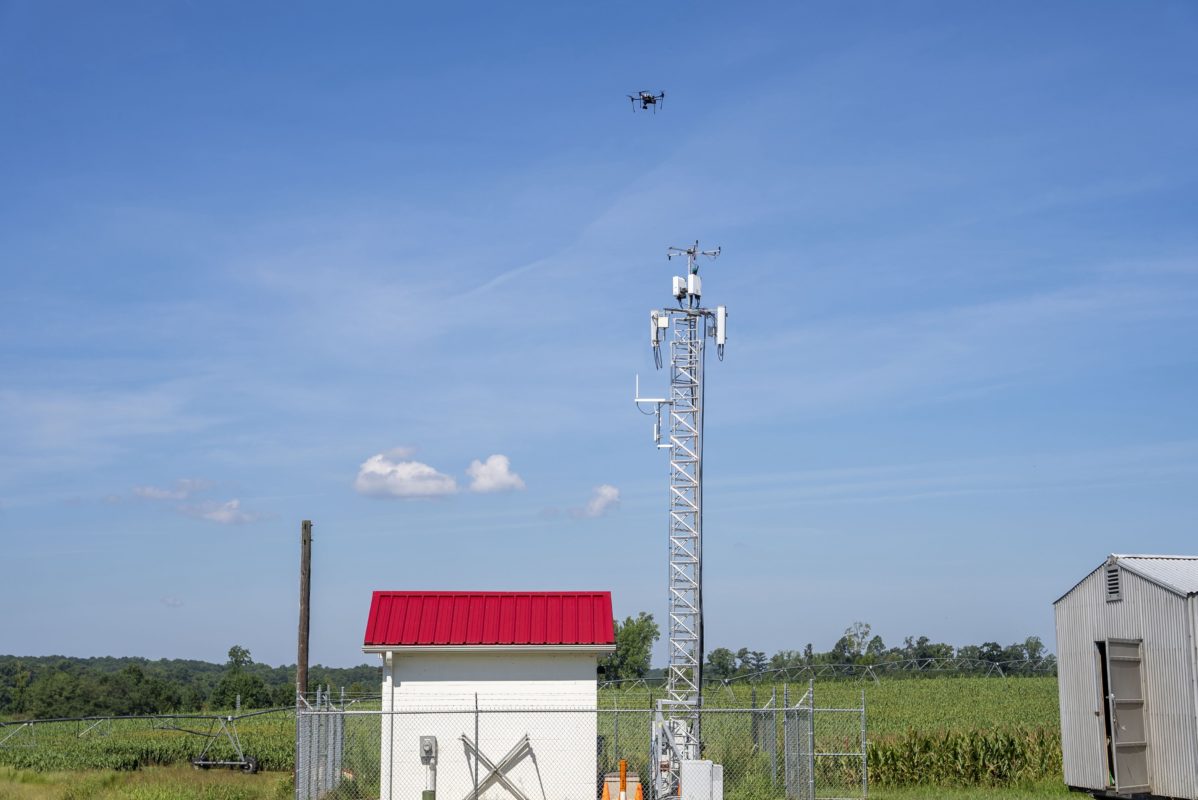Ericsson (NASDAQ: ERIC) and the Aerial Experimentation and Research Platform for Advanced Wireless (AERPAW), funded by the National Science Foundation and a consortium of industry partners, have announced a collaboration on advancing the use of 5G for drone operations in support of smart agriculture.
Ericsson enables communications service providers and enterprises to capture the full value of connectivity. The company’s portfolio spans the following business areas: Networks, Cloud Software and Services, Enterprise Wireless Solutions, Global Communications Platform, and Technologies and New Businesses. It is designed to help our customers go digital, increase efficiency and find new revenue streams. Ericsson’s innovation investments have delivered the benefits of mobility and mobile broadband to billions of people globally
In a demonstration hosted at North Carolina State University, the AERPAW team, part of the Platforms for Advanced Wireless Research (PAWR) program, equipped a custom drone with a connected camera and local compute capacity in order to monitor a field of cattle for information on grazing patterns. Footage from the remote field was streamed over a 5G connection enabled by an Ericsson base station and Ericsson Cloud Packet Core network. The demonstration took place on the mid-band spectrum (3.4 gigahertz) applying 100 megahertz of spectrum under AERPAW’s experimental program license. Network performance was measured at speeds exceeding 100 Megabits per second in the uplink and more than 450 Megabits per second in the downlink.
The advanced connectivity of a 5G network provides the capabilities needed to sustain high-quality video streaming, support remote interaction, and enable analytics at the edge through communication with a local compute-enabled network node. Use cases include agriculture solutions such as animal monitoring and tracking, but also delivery of supplies and objects for commercial use, improved air traffic control under Federal Aviation Administration regulations*, and command and control of unmanned aerial vehicles (UAVs) over cellular links.
“Smart agriculture will likely represent a very large growth segment for UAVs in the next decade,” said Mihail L. Sichitiu from AERPAW. “And field testing at sites like AERPAW is critical both for exploring what’s possible and for ensuring operational safety. Only a drone under constant monitoring and control is a safe drone.”
Ericsson and AERPAW have enhanced research efforts in line with national priorities, speeding up the transfer of innovation from university labs to industry end-users. The collaboration has also built wireless capabilities through creative partnership, leveraging an expanded pool of experts and resources across the public and private sectors.
“It’s great to see Ericsson and AERPAW showcasing how collaboration can bring together research and 5G networks to support critical operations supporting public safety and agriculture monitoring,” said Per Wahlen, Vice President and Head of Business Development at Ericsson North America. “Wide-area network coverage is needed to safely expand drone operations beyond visual line-of-sight missions, and this research provides the improved capabilities for more diverse and critical applications.”
AERPAW, based in Raleigh, NC, is one of four testbeds in the Platforms for Advanced Wireless Research (PAWR)program supported by the National Science Foundation (NSF). Its mission is to accelerate fundamental research with unmanned aerial vehicles using advanced 5G wireless communications and networking technologies.
*The AERPAW demo was conducted in compliance with the Federal Aviation Administration’s Part 107 guidelines. The drone was under visual observation at all times by the operating pilot, or by an observer in continuous communication with the pilot.


